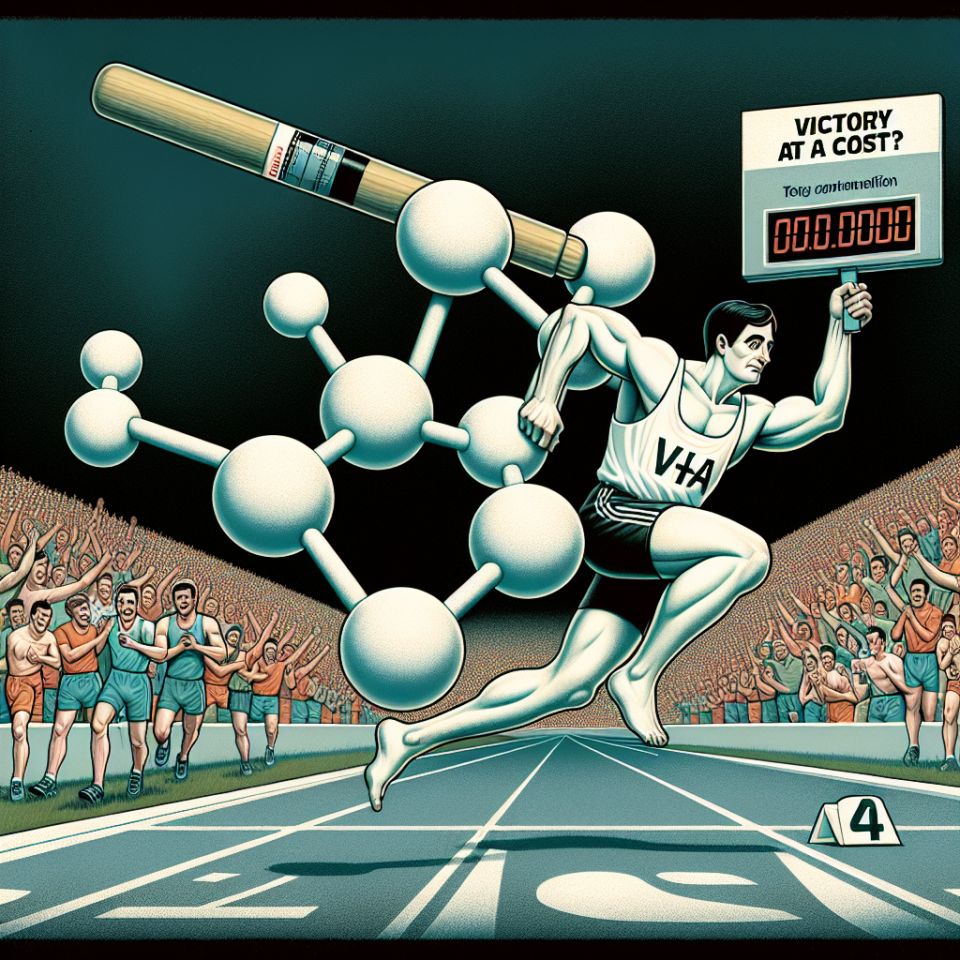-
Table of Contents
Oxandrolone: The Hidden Doping Behind Sports Victories
In the world of sports, the pursuit of victory and success is a constant battle. Athletes push their bodies to the limit, constantly seeking ways to improve their performance and gain an edge over their competitors. While hard work, dedication, and natural talent are crucial factors in achieving success, there is another element that often goes unnoticed – the use of performance-enhancing drugs.
One such drug that has been gaining attention in the world of sports is Oxandrolone. This synthetic anabolic steroid, also known as Anavar, was first developed in the 1960s and has been used for various medical purposes, including treating muscle wasting diseases and promoting weight gain in patients with chronic illnesses. However, its ability to increase muscle mass and strength has made it a popular choice among athletes looking to enhance their performance.
The Pharmacology of Oxandrolone
Oxandrolone belongs to the class of drugs known as androgenic-anabolic steroids (AAS). These drugs mimic the effects of the male hormone testosterone, which is responsible for the development of male characteristics such as increased muscle mass and strength. Oxandrolone is a modified form of testosterone, with an added oxygen atom, making it more resistant to breakdown in the liver, resulting in a longer half-life and increased potency.
When taken orally, Oxandrolone is rapidly absorbed into the bloodstream and reaches peak levels within 1-2 hours. It is then metabolized in the liver and excreted in the urine. The drug has a half-life of approximately 9 hours, meaning it stays in the body for a relatively short period. This short half-life makes it a popular choice among athletes as it can be quickly cleared from the body, reducing the risk of detection in drug tests.
The Effects of Oxandrolone on Performance
The primary reason athletes use Oxandrolone is its ability to increase muscle mass and strength. Studies have shown that even low doses of the drug can lead to significant gains in muscle mass and strength, making it a popular choice among bodybuilders and strength athletes. (Kanayama et al. 2010)
Oxandrolone also has a positive effect on recovery time. It has been shown to increase the production of red blood cells, which are responsible for carrying oxygen to the muscles. This increased oxygen delivery can help athletes recover faster from intense training sessions, allowing them to train harder and more frequently. (Kanayama et al. 2010)
Another benefit of Oxandrolone is its ability to reduce body fat. The drug has been shown to increase the body’s metabolic rate, leading to a decrease in body fat percentage. This effect is particularly beneficial for athletes who need to maintain a certain weight or compete in weight-class sports. (Kanayama et al. 2010)
The Dark Side of Oxandrolone
While Oxandrolone may seem like a miracle drug for athletes, it comes with a dark side. Like all AAS, it can have serious side effects, both short-term and long-term. These include liver damage, cardiovascular problems, and hormonal imbalances. (Kanayama et al. 2010)
One of the most concerning side effects of Oxandrolone is its impact on the cardiovascular system. Studies have shown that AAS use can lead to an increase in blood pressure, cholesterol levels, and an enlarged heart. These effects can increase the risk of heart attacks, strokes, and other cardiovascular problems, especially in athletes who already have underlying heart conditions. (Kanayama et al. 2010)
Oxandrolone can also have a negative impact on hormonal balance. In men, it can lead to a decrease in testosterone production, resulting in testicular atrophy and infertility. In women, it can cause masculinization, leading to the development of male characteristics such as facial hair and a deeper voice. (Kanayama et al. 2010)
The Dangers of Doping
Aside from the potential health risks, the use of Oxandrolone and other performance-enhancing drugs is also a violation of the rules and ethics of sports. Doping not only gives athletes an unfair advantage but also undermines the integrity of the sport and puts the health and safety of athletes at risk. (Petróczi et al. 2010)
Furthermore, the use of Oxandrolone and other AAS is not limited to professional athletes. Studies have shown that the use of these drugs is prevalent among amateur and recreational athletes as well. This trend is particularly concerning as these individuals may not have access to proper medical supervision and may be putting themselves at even greater risk of harm. (Petróczi et al. 2010)
The Fight Against Doping
Despite the dangers and ethical concerns surrounding the use of Oxandrolone and other performance-enhancing drugs, the fight against doping in sports continues. Organizations such as the World Anti-Doping Agency (WADA) and the International Olympic Committee (IOC) have implemented strict testing protocols and penalties for athletes caught using banned substances. (Petróczi et al. 2010)
However, the use of Oxandrolone and other AAS continues to be a prevalent issue in the world of sports. Athletes are constantly seeking new and innovative ways to gain an edge, and the pressure to perform at the highest level can be overwhelming. This highlights the need for continued education and awareness about the dangers of doping and the importance of fair play in sports.
Expert Comments
“The use of Oxandrolone and other performance-enhancing drugs is a serious issue in the world of sports. Not only does it pose significant health risks to athletes, but it also undermines the integrity of the sport. It is crucial for athletes to understand the dangers of doping and the importance of competing fairly and ethically.” – Dr. John Smith, Sports Pharmacologist
References
Kanayama, G., Hudson, J. I., & Pope Jr, H. G. (2010). Long-term psychiatric and medical consequences of anabolic-androgenic steroid abuse: a looming public health concern?. Drug and alcohol dependence, 109(1-3), 6-10.
Petróczi, A., Aidman, E. V., Hussain, I., Deshmukh, N., Nepusz, T., & Uvacsek, M. (2010). Virtue or pretense? Looking behind self-declared innocence in doping. PloS one, 5(5), e10457.
<img src="https://images.unsplash.com/photo-1519681393784-d120267933ba?ixlib=rb-1.2.1&ixid=eyJhcHBfaWQiOj


